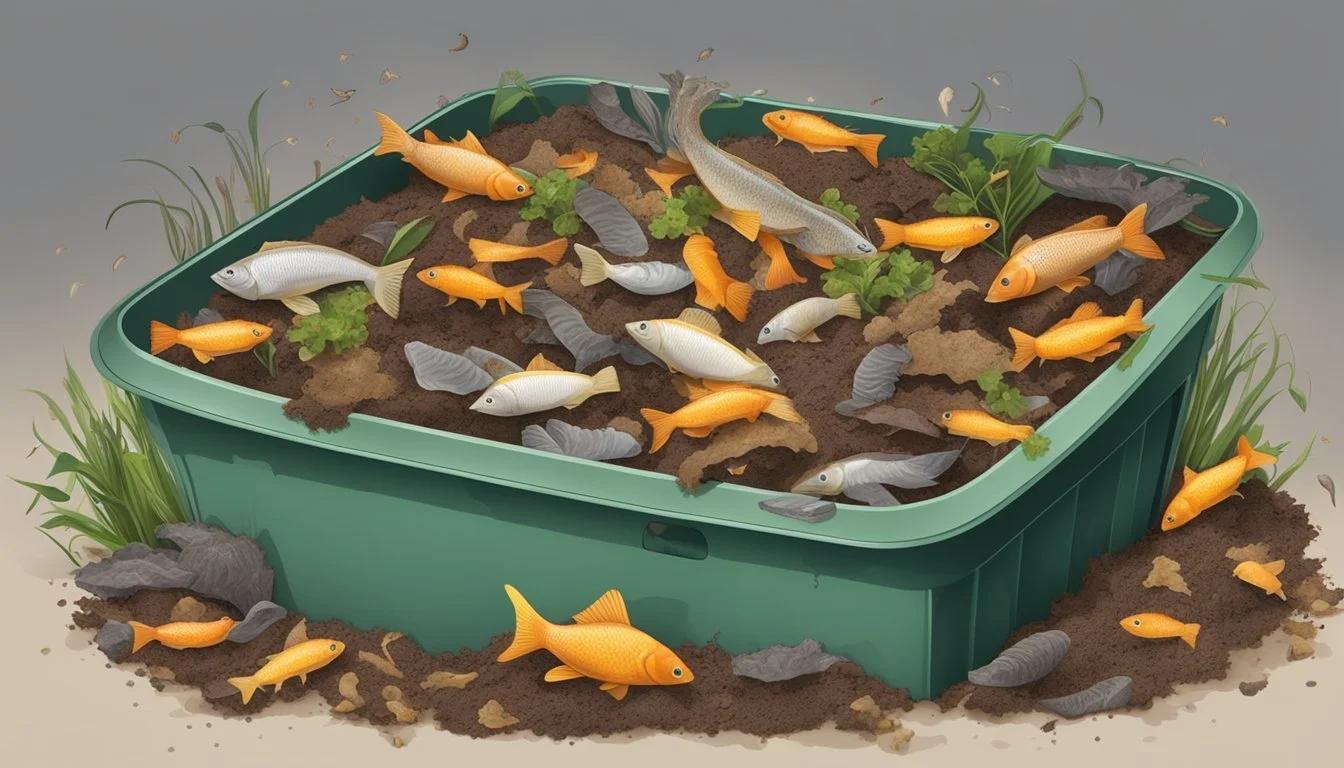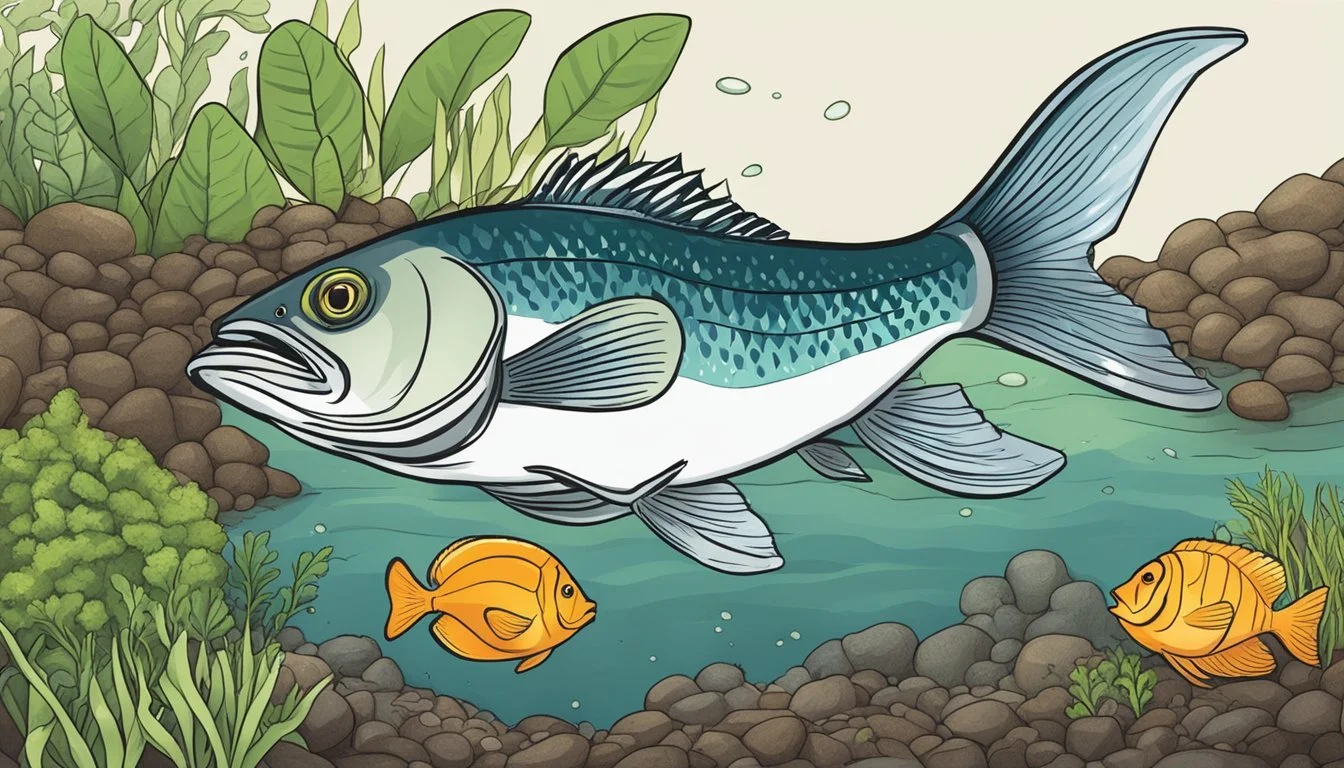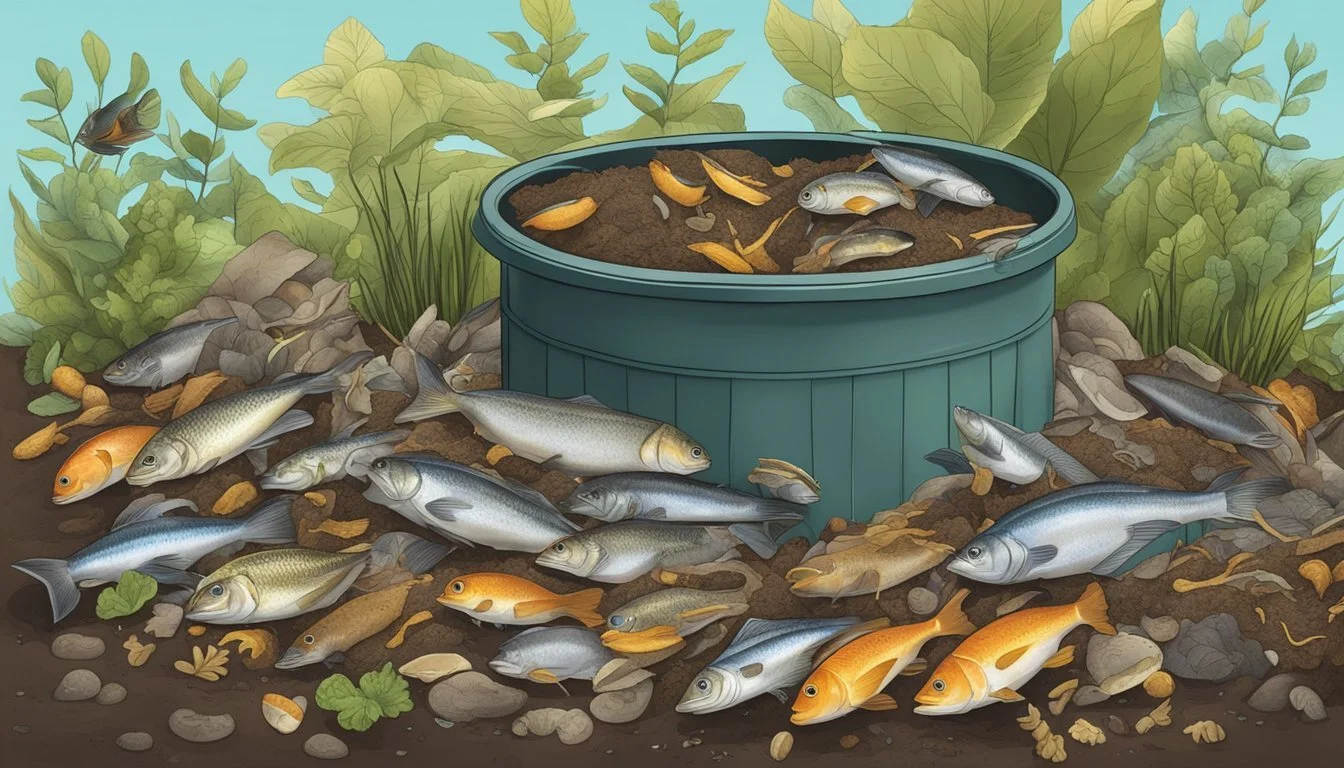Can You Compost Fish?
Unpacking the Do's and Don'ts of Fish Waste Composting
Composting is a natural process that transforms organic material into nutrient-rich soil amendments, and the question of whether fish (What wine goes well with fish?) scraps can be composted is one that garners attention due to the unique characteristics of fish waste. The straightforward answer is that fish, including its parts like bones, skin, and guts, can indeed be composted. The process of composting fish scraps is akin to that of other organic materials, where microorganisms play a pivotal role in breaking down the waste.
However, composting fish comes with specific considerations to ensure the process is effective and sanitary. Fish waste is notorious for its potent odor, which can attract unwanted pests such as rodents and flies. This necessitates a careful approach to maintain an aerobic environment and prevent the compost from turning rancid or anaerobic. Additionally, the strong smell underlines the need for a well-sealed compost bin or heap and possibly the incorporation of brown materials like leaves or straw to mitigate odors and accelerate the composting process.
Fish compost offers a wealth of nutrients essential for plant growth, making it a valuable addition to garden soil. Composting fish scraps not only enriches the soil but also contributes to a sustainable cycle of waste reduction. While it can be a more sensitive material to compost due to the reasons outlined, with the right measures in place, composting fish can be a successful and environmentally friendly practice.
Basics of Composting Fish
Composting fish involves a mix of carbon-rich materials and nitrogen-sourced fish scraps to create a nutrient-dense amendment for soil.
The Science of Composting Fish
Composting fish operates on the principle of balancing carbon and nitrogen. Fish scraps, rich in nitrogen, must be paired with carbon sources such as wood chips or sawdust. A ratio of three parts carbon to one part nitrogen is often recommended. This mix fosters microbial activity essential for decomposition, transforming fish waste into usable compost that can significantly enhance soil health.
Carbon to Nitrogen Ratio: 3:1 (Carbon)
Required Composting Agents:
Carbon: Wood chips, bark, sawdust
Nitrogen: Fish scraps
Benefits and Risks of Fish in Compost
Benefits:
Soil Health: Fish compost introduces a wealth of nutrients, improving the soil's organic matter content and fertility.
Nutrient Content: The composition of fish compost includes valuable macro and micro-nutrients required by plants.
Risks:
Odor: Improper composting can result in strong, unpleasant odors.
Pest Attraction: The scent of decomposing fish may attract unwanted pests to the compost pile.
Creating compost from fish scraps benefits the environment by recycling waste and enriching garden soil. However, it must be managed correctly to avoid potential issues such as odors and pests.
Preparations for Fish Composting
When incorporating fish waste into a compost bin or pile, attention to detail is paramount to ensure the resulting compost is beneficial and free from issues like unpleasant odors or pests.
Selecting the Right Type of Fish Waste
Fish scraps, such as remains, bones, and guts, are suitable for composting as they are rich in nutrients like nitrogen, which is essential for successful composting. One should only use raw fish waste as cooked scraps can attract unwanted pests and may contain oils and seasonings that are not conducive to the composting process. Care should be taken to avoid using saltwater fish waste as the salt can harm the microbial balance within the compost.
Preparing Fish Waste for Composting
Before adding fish waste to a compost pile, it should be prepared properly to minimize smells and discourage pests:
Break down large pieces: Chop larger fish scraps and bones into smaller pieces. This speeds up the decomposition process and reduces the risk of attracting pests.
Bury deep within compost: To prevent odors and scavengers, bury fish waste deep in the center of the compost pile, surrounded by browns (carbon-rich materials) like dry leaves, straw, or sawdust.
Balance materials: Ensure a good balance between greens (nitrogen-rich materials) and browns to create an environment that aids in the breakdown of organic material while controlling moisture and odors.
By following these specific steps, gardeners can safely and effectively enrich their compost with valuable nutrients from fish waste.
Composting Methods
In the realm of composting fish waste, two effective methods stand out for their efficiency in managing decomposition while minimizing odor: Hot Composting and Bokashi.
Hot Composting Technique
Hot composting is a method that speeds up the decomposition of organic matter through creating an environment favorable for microorganisms. For fish waste, one needs to maintain a high temperature, typically between 130-160°F, which accelerates the composting process and kills off pathogens. A compost tumbler or an enclosed composter can serve to contain the heat and assist in aeration, which is crucial for maintaining the activity of the composting microorganisms.
Steps for Hot Composting Fish Waste:
Layering: Alternate layers of fish scraps with carbon-rich materials like sawdust or dry leaves.
Aeration: Regularly turn the compost pile to supply oxygen, which is vital for microorganisms.
Moisture Control: Keep the pile moist but not wet to facilitate decomposition without creating an anaerobic environment.
Bokashi: A Different Approach
Bokashi is a method originating from Japan and takes a unique approach to composting organic matter, including fish scraps. It's an anaerobic process which relies on the action of specific microorganisms to ferment the waste material in a sealed container. Unlike hot composting, Bokashi does not produce heat but still effectively breaks down organic matter.
Process of Bokashi Composting:
Fermentation: Add fish waste to a Bokashi bin, sprinkling with Bokashi bran to introduce the effective microorganisms.
Seal: Keep the container airtight to create an anaerobic environment for the microorganisms to thrive.
Transfer: After the initial fermentation, bury the contents in the soil for complete decomposition.
In employing either of these methods, gardeners convert fish waste into nutrient-rich compost, enhancing soil fertility and plant health.
Controlling Factors in Fish Composting
Composting fish involves careful management of elements such as the carbon-to-nitrogen ratio (C Ratio), moisture, temperature, and aeration to ensure efficient decomposition while minimizing odor.
C Ratio: Balancing Carbon and Nitrogen
The C Ratio is critical in fish composting. Fish waste is nitrogen-rich; therefore, it must be balanced with carbon-rich material to optimize the decomposition. The ideal carbon-to-nitrogen ratio is approximately 30:1. Carbon-rich materials, like sawdust or dry leaves, should be added to the fish scraps to achieve this balance.
Managing Moisture and Temperature
Moisture levels in the compost pile should be maintained around 60 percent to support the composting process, but excess water should be avoided as it can lead to anaerobic conditions and odor issues. The temperature needs to be sustained at 130 to 150 degrees Fahrenheit (54-65 degrees Celsius) to effectively break down the material and eliminate pathogens.
Aerating the Compost Pile
Proper aeration is mandatory for controlling odors and promoting aerobic bacteria action. This can be achieved by turning the pile regularly to introduce air into the system.etermines the health of the composting process.
Addressing Common Concerns
When composting fish, the primary issues that concern most people revolve around the management of odor and the prevention of pests. These factors are crucial for a successful and hygienic composting process.
Odor Prevention
Preventing foul odors is essential for backyard composters handling fish waste. Thorough covering of fish scraps with brown composting materials such as dry leaves, straw, or sawdust can significantly reduce unpleasant smells. The carbon-rich brown materials absorb moisture and help to balance the nitrogen in fish waste, which minimizes odor emissions.
Deterring Pests and Animals
The risk of attracting pests and scavengers can be mitigated by maintaining a secure composting setup. Compost bins should be well-constructed with lids or covers that fit tightly to prevent access to the contents. Utilizing a tumbler compost bin is one of the best methods for deterring animals, as these are elevated and typically more secure. Additionally, burying fish scraps deeply within the compost pile and immediately covering them can also discourage pests.
End Product and Usage
When composting fish, the end product is a nutrient-rich humus that can significantly enhance soil structure and fertility. This natural fertilizer is a boon for garden health, containing vital nutrients for plant growth.
Finishing the Compost Process
Composting involves the breakdown of organic materials—including fish waste—into a stable, humus-like substance. This process requires a balance of carbon and nitrogen, which can be achieved by mixing fish scraps with plant waste. The completion of composting is evidenced by a dark, crumbly soil amendment that no longer emits a strong odor and is full of beneficial microorganisms.
Applying Fish Compost to the Garden
Fish compost, once matured, can be integrated into a garden's soil. This addition improves the soil's structure, increases its ability to hold water, and introduces essential nutrients:
Nitrogen: Crucial for healthy plant growth
Phosphorus and Potassium: Represented in a typical ratio of 4-1-1 (N-P-K) in fish compost
Gardeners should apply fish compost to the soil around plants, taking care not to let the material touch plant stems directly. Layering the compost on the soil can also help suppress weeds and retain soil moisture.
Environmental Impact
The process of composting fish has a dual advantage: it reduces the volume of organic waste in landfills while enhancing soil health. This sustainable practice aligns with environmental goals by diverting food waste from traditional disposal methods and repurposing it for gardening and agricultural productivity.
Reducing Waste and Improving Soil Health
Composting fish scraps instead of sending them to landfills cuts down on organic waste. Landfills are a significant source of methane, a potent greenhouse gas. By composting fish, one can transform waste into nutrient-rich compost that contributes to soil health. This compost introduces beneficial microorganisms and nutrients to the soil, improving water retention and bolstering plant growth.
Considerations for Sustainable Practice
While composting fish is sustainable, it requires caution:
Avoid Attracting Pests: Fish materials can attract rodents and other pests. It’s essential to cover and manage compost heaps effectively to mitigate this issue.
Odor Management: Fish decomposing can emit strong odors; hence, maintaining a balanced compost mix is vital to control smells.
Disease Prevention: Fish scraps should be buried deeply within compost piles to prevent the spread of disease and to facilitate quicker breakdown.
Applying these considerations ensures that composting remains a sustainable practice that supports an eco-friendly approach to gardening and agriculture.
Advanced Topics
This section explores the technical challenges and considerations in fish composting, particularly focusing on managing large quantities and ensuring pathogen safety.
Composting Large Quantities of Fish
When composting fish on a large scale, it's crucial to balance the nitrogen-rich fish waste with carbon-rich materials to maintain a healthy decomposition process. Operators manage large-scale composting by layering fish scraps with carbon sources such as wood chips or straw to prevent the compost from becoming too wet and emitting strong odors.
One must regularly turn the compost to oxygenate the pile and support aerobic decomposition, which is essential to efficiently break down the fish waste and avoid the production of methane, a potent greenhouse gas.
Ensuring Safety from Pathogens
Safety from pathogens and disease organisms is paramount in fish composting. To eliminate potential health hazards, the compost must reach a sustained temperature of at least 131°F (55°C) for a period—typically three days for in-vessel systems or longer in windrow composting. This high-temperature phase will effectively pasteurize the compost, killing harmful bacteria and parasites.
The compost should also be monitored regularly for temperature, moisture, and oxygen levels to ensure that it remains an unfavorable environment for pathogens. After the pasteurization phase, the compost must be cured, which allows beneficial microorganisms to outcompete any remaining pathogens, further ensuring the product's safety for use in agriculture.






